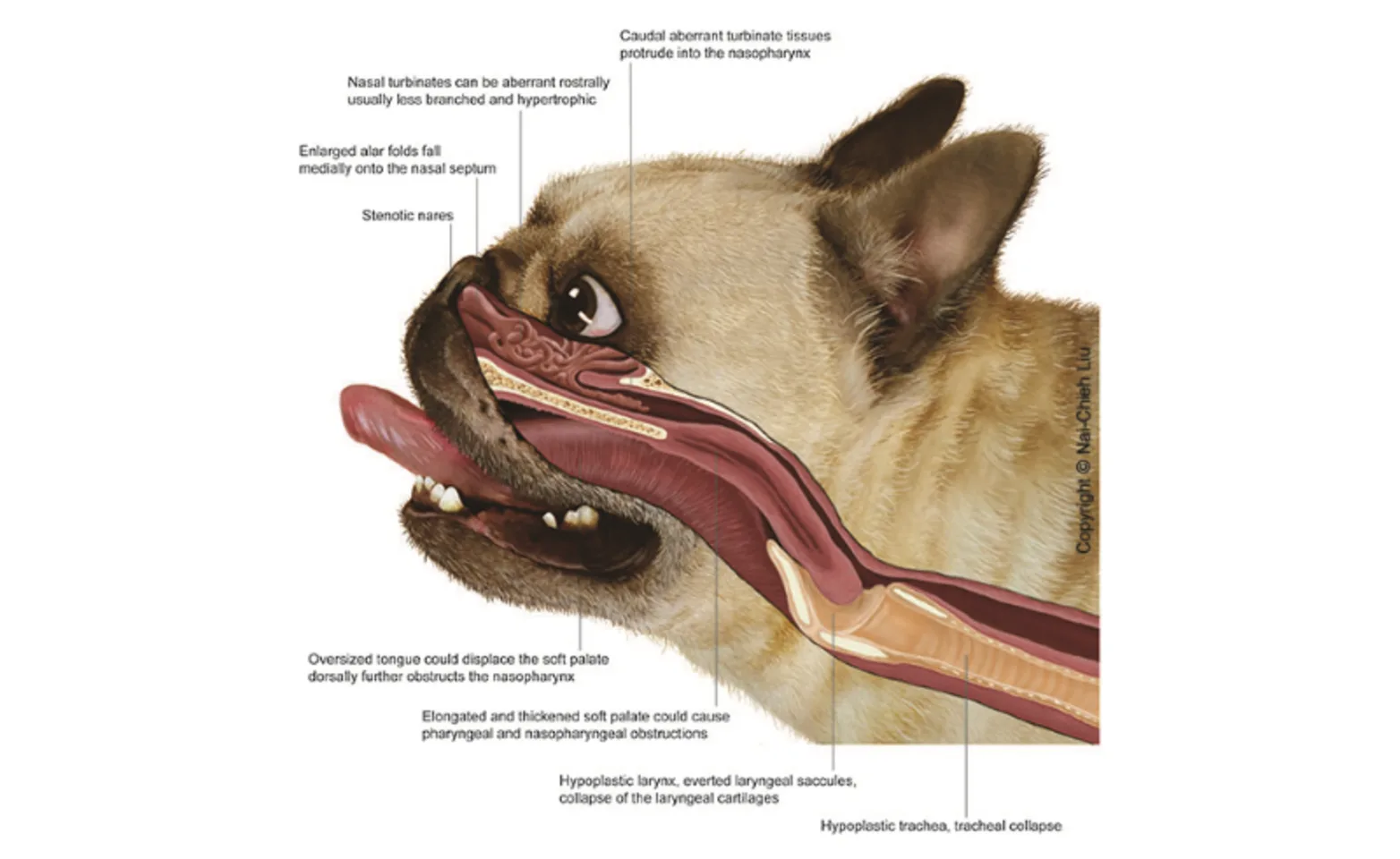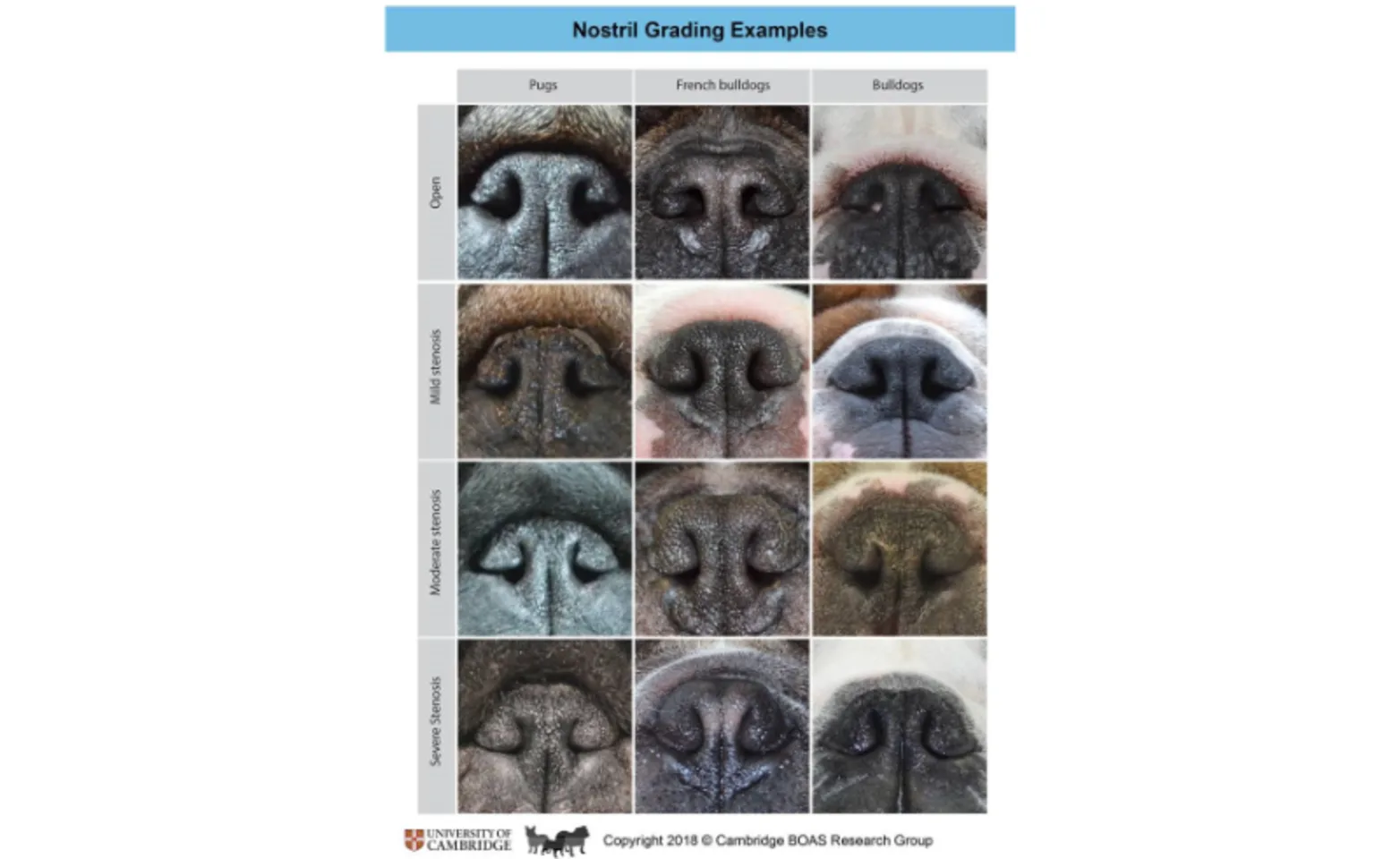Dallas Veterinary Surgical Center

WHAT IS BUAS?
Brachycephalic Upper Airway Syndrome (BUAS) is a respiratory condition that arises from anatomical abnormalities hindering normal airflow.
These shorter nosed, flat faced dog breeds, such as Frenchies, Bulldogs, Pugs, Pekinese, Boxers, Cavalier King Charles Spaniels, Tibetan Spaniels, Persians, Himalayans, and Burmese are prone to respiratory disease and breathing difficulties that can range from moderate to extremely severe.

WHAT ARE THE SYMPTOMS?
Noisy Breathing: Snorting, snoring, or sounds of respiratory distress.
Exercise Intolerance: Difficulty breathing during or after physical activity.
GI Abnormalities: Esophagitis, reflux, and other gastrointestinal issues.
Heat Intolerance: Increased risk due to impaired respiratory function.
Altered Posture: Adjustments for better airflow.
WHAT DOES SURGICAL INTERVENTION LOOK LIKE?
Customized Surgical Planning: Address primary abnormalities like elongated soft palate, stenotic nares, and other specific issues.
Advanced Techniques: Utilizing state-of-the-art surgical procedures tailored to the unique needs of each patient.
Post-Operative Care: Our dedicated team strives to facilitate a smooth recovery with comprehensive post-surgical monitoring and pain management.
Lifestyle Modifications: Collaborate with our veterinary team to implement effective weight management and exercise plans to support the surgical outcomes and enhance your pet’s overall well-being.
HOW CAN SURGICAL INTERVENTION HELP?
Improved Breathing Efficiency: Surgical correction targets airway obstructions, allowing your pet to breathe more easily.
Enhanced Exercise Endurance: With a surgically improved airway, your pet can engage in physical activities with increased stamina and endurance.
Reduced Noisy Breathing: Surgical intervention minimizes audible breathing issues such as snorting and snoring, providing a quieter environment.
Prevention of Secondary Complications: Addressing primary abnormalities, like elongated soft palate and stenotic nares, helps prevent the development of secondary complications, reducing the risk of more severe respiratory issues.
Enhanced Quality of Life: Ultimately, surgical correction contributes to an improved overall quality of life for your brachycephalic pet. It alleviates discomfort associated with breathing difficulties, allowing your furry companion to lead a more comfortable and fulfilling life.
Proactive monitoring, timely intervention, and collaborative care with your veterinarian are key to ensuring the well-being and happiness of your brachycephalic breed.
